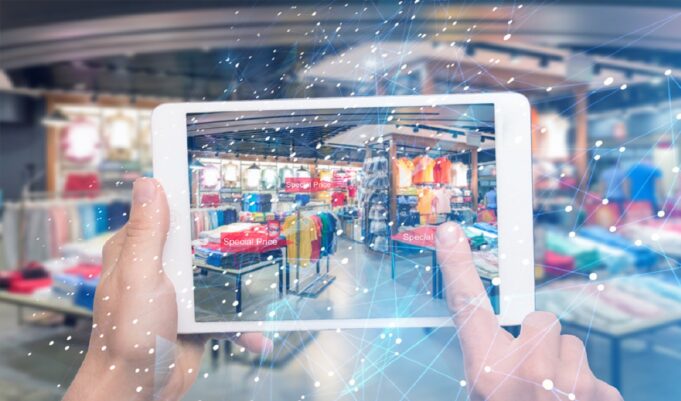We are in an era where almost everything is digitized. Technology has the immense power to change our lives tremendously in many ways. Take shopping. We no longer need to avail ourselves physically to shop with the emergence of internet retailers. Online shopping is the norm for many today.
On that note, the emergence of bots has transformed retail shopping. Bots are software applications that run automated tasks online, usually to mimic human activities. There are multiple types of bots, including commercial, malicious, and social bots. This article explores the realm of online shopping automation by bots, from the benefits to the impacts.
How Bots Have Revolutionized Shopping

Some shopping bots are software applications that search for products in various online stores to identify the most affordable rates and complete online shopping via automated checkouts. Through machine learning and multiple algorithms, shopping bots can check products offered through different online markets and analyze their prices. They can also monitor availability and add the ideal products to a cart depending on the users’ preferences. Shopping bots can take the form of a website feature, plugin, or browser function. Some popular shopping bots include mySimon and shoppinglist.com.
As much as shopping bots can effectively manage users’ online shopping, some websites have anti-bot measures. Shopping proxies address this issue. When the two tools combine, online shopping gets to another level. Users will be able to establish several connections to a retailer’s site from different IP addresses. Each link seems like another user is accessing the website, bypassing the one-item-per-user rule for exclusive products, for example. If you’re a sneakerhead, check MarsProxies for IPs that will change the way you shop.
Benefits of Shopping Automation
Everyone should embrace bots when they’re searching for the best deals. Why? The benefits of shopping automation include the following:
Time Savings
Shopping bots quickly consolidate the information gathered over the various sites it goes through, making it convenient for humans. Users can retrieve the necessary data for their intended purchases in mere seconds.
Better Deals
Users can also get better deals using shopping bots than manual website searching. While manually searching, users will likely not exhaust the online market to find the best product deals. Shopping bots can comb the web for discounts, promotions, or coupons as they scan different online stores. These deals will help shoppers stretch every dollar.
Personalized Shopping
Since shopping bots can access a user’s previous purchases and browsing history, it easily personalizes the shopping experience. They use algorithms that help them identify unique preferences for personalized recommendations.
The Future of Bot-Driven Shopping Automation

With technological advancement, bot-driven shopping automation has a huge potential to transform the retail industry. Some of the key aspects of future shopping bots include:
Voice, Chatbot, and Shopping Bot Integration
Voice assistants and chatbots are currently trending in the technology industry. As their popularity grows immensely, integrating shopping bots with these applications will be ubiquitous. Users will be able to learn about products, add them to the cart, and purchase through voice commands or chat messages. Shopping will be like a walk in the park with such automation.
Social Media Integration
The online retail industry will be more accessible and engaging once merged with various social media platforms, including Instagram, Twitter, and WhatsApp, to mention a few. This integration will bridge the gap between social interaction and online shopping.
Augmented Reality (AR) and Virtual Reality (VR) Experiences
Imagine a shopping platform whereby users can choose clothes or shoes, try them on, and purchase without physically being at the retailer’s location. Augmented reality (AR) communicates and displays virtual content in the physical environment. Virtual reality is a simulated environment, making users feel as if they are in an actual store.
Augmented reality and virtual reality incorporated into online shopping will upgrade users’ shopping experience giving them an immersive feeling. Users will be able to shop for any item, like electronics, or kitchen equipment, by visualizing them in real-world contexts. Shopping bots will aid navigation and ease the whole shopping experience.
Human and Bot Collaboration
The future of bot-driven shopping automation will promote a more interactive and exciting experience for humans than it already is. The increased engagement will drive humans to collaborate with bots to generate perfect results.
What The Future Holds?
The future of bot-driven online shopping automation holds significant potential and is poised to transform the way we shop and interact with e-commerce platforms. With advancements in artificial intelligence (AI) and natural language processing, bots are becoming increasingly sophisticated, enabling more seamless and personalized shopping experiences.
One key aspect of the future of bot-driven online shopping automation is the rise of chatbots. These intelligent virtual assistants can assist customers in real-time, answering inquiries, providing product recommendations, and guiding them through the purchasing process. Chatbots are designed to understand and respond to natural language, making interactions feel more conversational and personalized.
Furthermore, as bots continue to learn and gather data from customer interactions, they can offer highly targeted and customized product suggestions based on individual preferences, purchase history, and browsing behavior. This level of personalization enhances the customer experience and increases the likelihood of conversion and customer satisfaction.
Another area where bot-driven online shopping automation is expected to grow is in the field of voice commerce. With the rise of smart speakers and virtual voice assistants, consumers can now shop hands-free using voice commands. Bots powered by AI can understand and interpret voice instructions, allowing users to browse products, make purchases, and track orders using just their voice.

Conclusion
It is evident that shopping bots make our online shopping experience magnificent as they save time, assist in obtaining great deals, and accurately personalize our shopping. Integrating shopping proxies into our shopping bots will eliminate some of the challenges experienced while shopping online. As seen earlier, the challenges include anti-bot sites and one item-per-user rule for exclusive products.
Looking at the future of bot-driven shopping automation, it is evident how online shopping will greatly advance. We shall be fitting clothes virtually, collaborating more with bots, communicating more about our purchases due to social media integration, and using voice assistants while shopping. The future bot-driven shopping automation will deliver a more immersive, productive, captivating, and cost-effective experience. We can’t wait.















